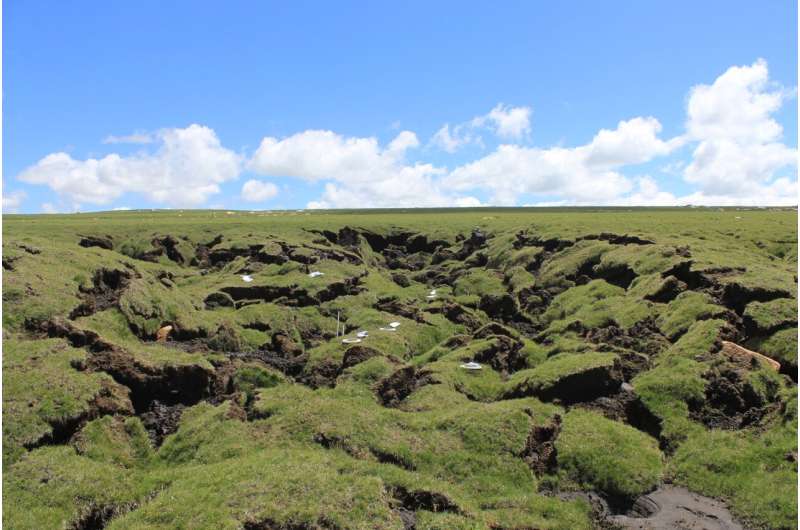Abrupt permafrost thaw found to intensify warming effects on soil CO₂ emission

According to a recent study published in Nature Geoscience, scientists have found that soil carbon dioxide (CO2) emissions are more sensitive to climate warming in permafrost-collapsed areas than in non-collapsed areas.
This study, based on field warming experiments combined with laboratory incubation of soils from a large-scale sampling, provides new insights about permafrost carbon–climate feedback in the context of future climate warming.
Warmer temperatures have led to rapid permafrost thawing in high-latitude and high-altitude permafrost regions. Abrupt permafrost thaw, known as thermokarst, occurs in approximately 20% of the northern permafrost region, but this region stores about half of all below-ground organic carbon. This type of thawing can restructure land surface morphology, causing abrupt changes to the soil biotic and abiotic properties, which may significantly alter ecosystem carbon cycling.
Since both thermokarst and non-thermokarst areas are simultaneously experiencing ongoing warming, an important but so far overlooked consideration is whether the warming effects on soil CO2 flux might differ between these two distinct landforms.
To fill this knowledge gap, a collaborative research group led by Prof. Yang Yuanhe from the Institute of Botany of the Chinese Academy of Sciences has investigated how thermokarst formation influences the responses of soil CO2 fluxes to climate warming, using multiple approaches.
In a well-replicated warming experiment conducted simultaneously in thermokarst and non-thermokarst areas, the researchers found that the warming-induced increase in soil CO2 release was about 5.5 times higher in thermokarst features than in adjacent non-thermokarst landforms.
They then analyzed over 30 potential drivers of the warming effects on CO2 release using soil physicochemical analyses, solid-state 13C nuclear magnetic resonance, and metagenomic sequencing…
…click on the above link to read the rest of the article…